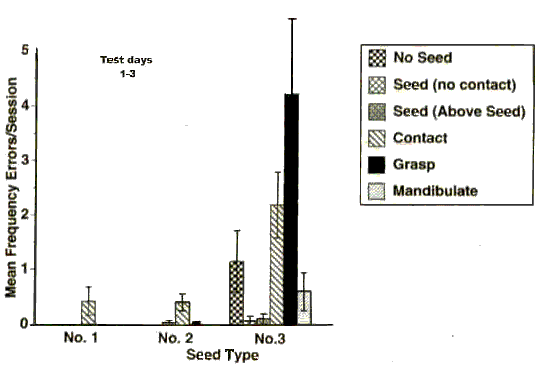![]()
The subjects were reared for 1.5 -2 years on the No. 2 pellets (2 mm in diameter). During 3 test days they were presented with 10 pellets of two sizes that they had never before encountered. The figure shows the average frequency of different error types over the 3 days. They made very few errors on the No. 1 pellets (1mm) but made many different types of errors on the No 3 pellets (3.6 mm). The most common types of errors were to peck at least 2 cm away from a seed (No Seed), hit the seed with the beak (Contact), or get it between the beaks before losing it (Grasp Errors) or succeeded in holding the seed but lost it as they moved it back in the beak during mandibulation (Mandibulate). Less frequent errors were pecks at seed that made no contact but hit the floor [Seed (no contact] or which stopped above the seed [Seed (Above Seed)]. The subjects learned to peck the No. 3 pellets very quickly and were making few errors by the third day. After the squab were proficient on all 3 seed sizes they were tested with a 7.2mm pellet. They made very few errors. This suggests that experience with two or three seed sizes was sufficient for inducing a generalized motor program.
